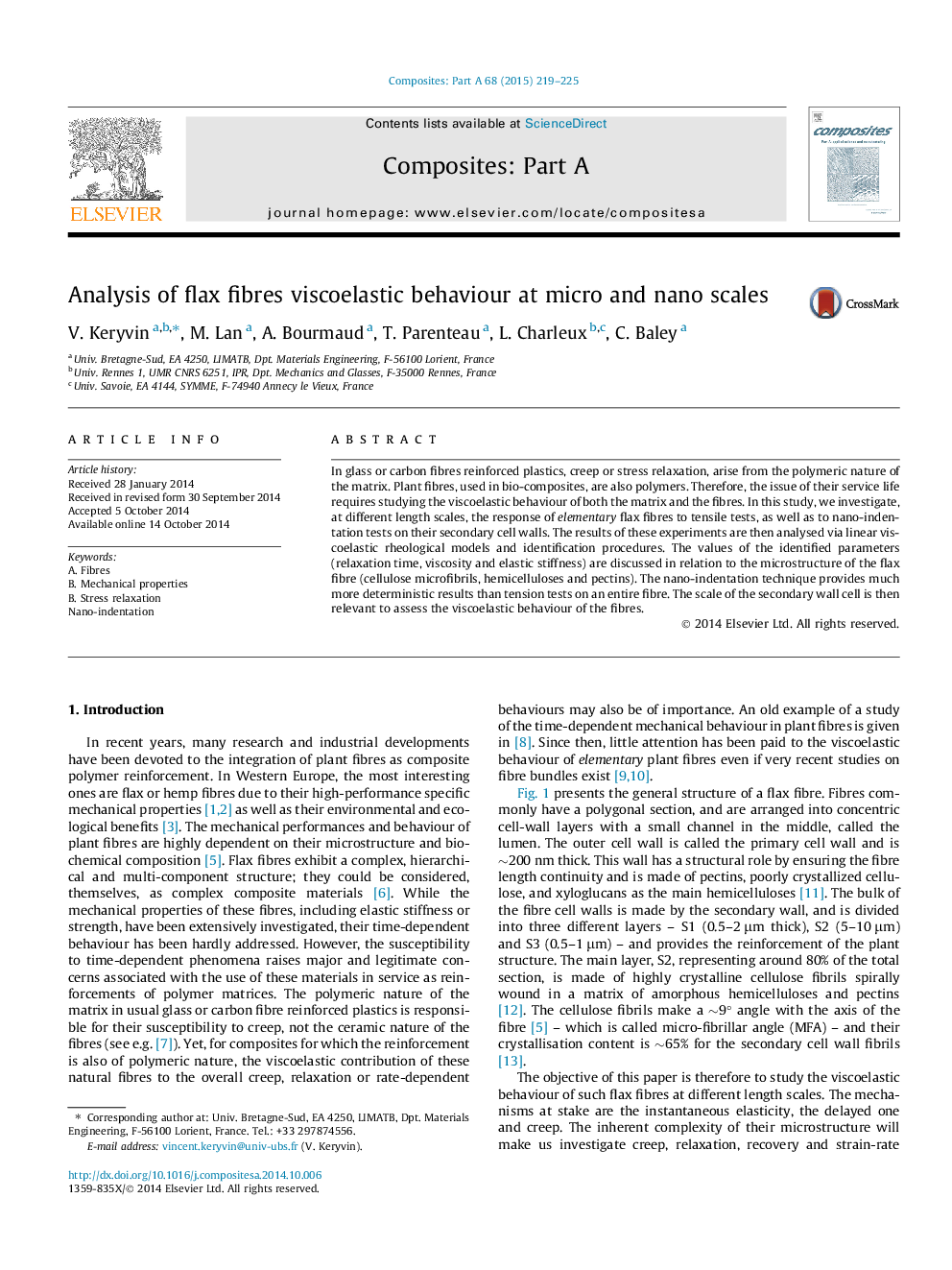| Article ID | Journal | Published Year | Pages | File Type |
|---|---|---|---|---|
| 7892193 | Composites Part A: Applied Science and Manufacturing | 2015 | 7 Pages |
Abstract
In glass or carbon fibres reinforced plastics, creep or stress relaxation, arise from the polymeric nature of the matrix. Plant fibres, used in bio-composites, are also polymers. Therefore, the issue of their service life requires studying the viscoelastic behaviour of both the matrix and the fibres. In this study, we investigate, at different length scales, the response of elementary flax fibres to tensile tests, as well as to nano-indentation tests on their secondary cell walls. The results of these experiments are then analysed via linear viscoelastic rheological models and identification procedures. The values of the identified parameters (relaxation time, viscosity and elastic stiffness) are discussed in relation to the microstructure of the flax fibre (cellulose microfibrils, hemicelluloses and pectins). The nano-indentation technique provides much more deterministic results than tension tests on an entire fibre. The scale of the secondary wall cell is then relevant to assess the viscoelastic behaviour of the fibres.
Related Topics
Physical Sciences and Engineering
Materials Science
Ceramics and Composites
Authors
V. Keryvin, M. Lan, A. Bourmaud, T. Parenteau, L. Charleux, C. Baley,
